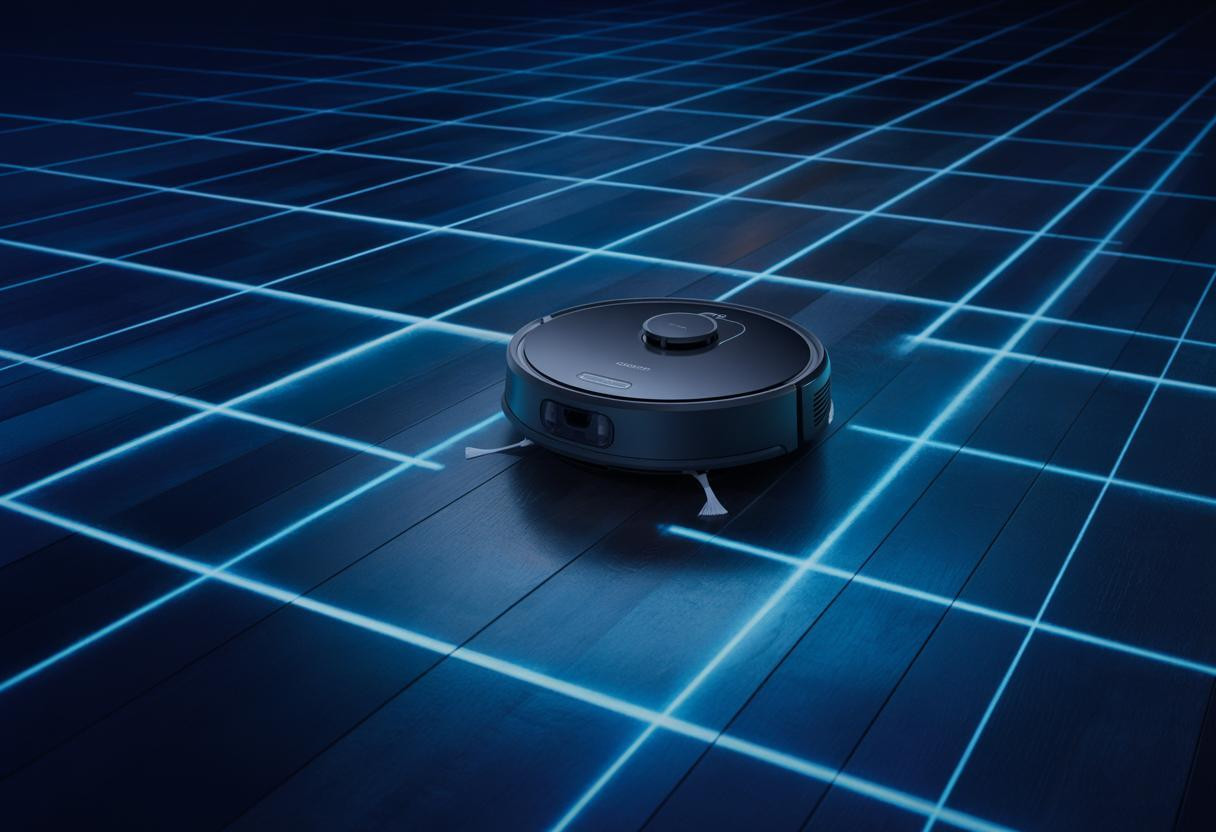Your smart vacuum silently glides across your living room each morning, but what you might not realize is that it’s simultaneously creating a detailed blueprint of your most private spaces and potentially sharing that data with companies you’ve never heard of.
This isn’t science fiction—it’s happening in millions of homes right now. As smart vacuums have evolved from simple cleaning tools to sophisticated mapping devices, they’ve become inadvertent surveillance systems that collect far more information than most homeowners realize.
The hidden technology mapping your entire home
Modern smart vacuums use advanced sensor systems that would make military reconnaissance teams envious. These devices employ LiDAR technology that captures 2,016 distance measurements per second, combined with cameras, infrared sensors, and gyroscopes to create incredibly detailed maps of your home.
The SLAM (Simultaneous Localization and Mapping) process doesn’t just identify walls and furniture—it records movement patterns, identifies room types, and even infers household routines. Your vacuum knows when you’re home, which rooms you use most, and how your daily life unfolds.
What’s particularly concerning is how this data gets transmitted. While some manufacturers like iRobot use encrypted TLS 1.2 protocols, others like Roborock have been found using unencrypted UDP transmissions that expose your home’s layout to anyone monitoring your network.
The data goldmine hiding in your floor plan
These devices collect three critical types of spatial data: Cartesian maps showing exact room dimensions, occupancy grids indicating cleaned versus uncleared zones, and behavioral patterns that reveal your family’s daily routines. This information creates a comprehensive profile of your household that extends far beyond simple cleaning needs.
Just like smart home privacy risks and surveillance concerns with other connected devices, your vacuum’s mapping capability represents a significant privacy vulnerability that most users never consider.
Why companies desperately want your home’s blueprint
The business incentives driving this data collection are substantial. Manufacturers use mapping data to develop software updates, create premium cleaning services, and optimize their algorithms. But the real value lies in secondary markets where this spatial intelligence becomes incredibly valuable.
Smart home companies pay premium prices for detailed floor plans that help them design targeted automation systems. Insurance companies could theoretically use this data to assess risk factors, while retailers might analyze room layouts to recommend specific products.
The hidden revenue streams
Your vacuum’s mapping data feeds into a larger ecosystem of smart home integration. Through protocols like Matter, manufacturers can share spatial information across different devices, creating comprehensive household profiles that extend far beyond cleaning preferences.
This interconnected approach means your vacuum’s data doesn’t stay isolated—it becomes part of a broader picture that includes your lighting patterns, temperature preferences, and security behaviors. Understanding personalizing your smart home environment becomes crucial as these devices increasingly shape our living spaces.
What most owners never realize about consent
The consent process for smart vacuum data collection is often buried in lengthy terms of service agreements that few users read completely. Many people assume they’re only agreeing to basic cleaning optimization, not realizing they’ve authorized comprehensive spatial surveillance.
Current regulatory frameworks like GDPR and CCPA address general data protection but lack specific provisions for spatial and behavioral data collected by household devices. This regulatory gap leaves consumers vulnerable to data practices they might never knowingly approve.
The trust erosion factor
As with understanding product safety risks consumers often overlook, many smart vacuum users remain unaware of the potential long-term consequences of their data sharing decisions.
Data breaches affecting smart home devices have already occurred, and the implications of leaked floor plans extend far beyond simple privacy violations—they could enable targeted break-ins or reveal sensitive information about household residents and their daily routines.
Protecting yourself without losing convenience
You don’t have to abandon smart cleaning technology entirely, but you should take specific steps to protect your privacy. Enable local-only mapping modes when available, regularly review your device’s data sharing settings, and consider models that offer end-to-end encryption for all data transmissions.
Look for vacuums that support Matter protocol with local control options, which can reduce cloud dependency while maintaining smart home integration. Some newer models allow you to create “privacy zones” that exclude sensitive areas like bedrooms from detailed mapping.
The future of smart home surveillance
As LiDAR costs decline and mapping technology becomes more sophisticated, spatial data collection will likely become ubiquitous across smart home devices. The key lies in demanding transparent data governance models that give users meaningful control over their information while still enabling technological innovation.
Your smart vacuum’s mapping capabilities represent just the beginning of how household devices will understand and potentially exploit our most private spaces—making informed consent and privacy protection more crucial than ever before.
